Affiliate links on Android Authority may earn us a commission. Learn more.
Samsung Galaxy Ring problems and how to fix them
Published onJanuary 24, 2025
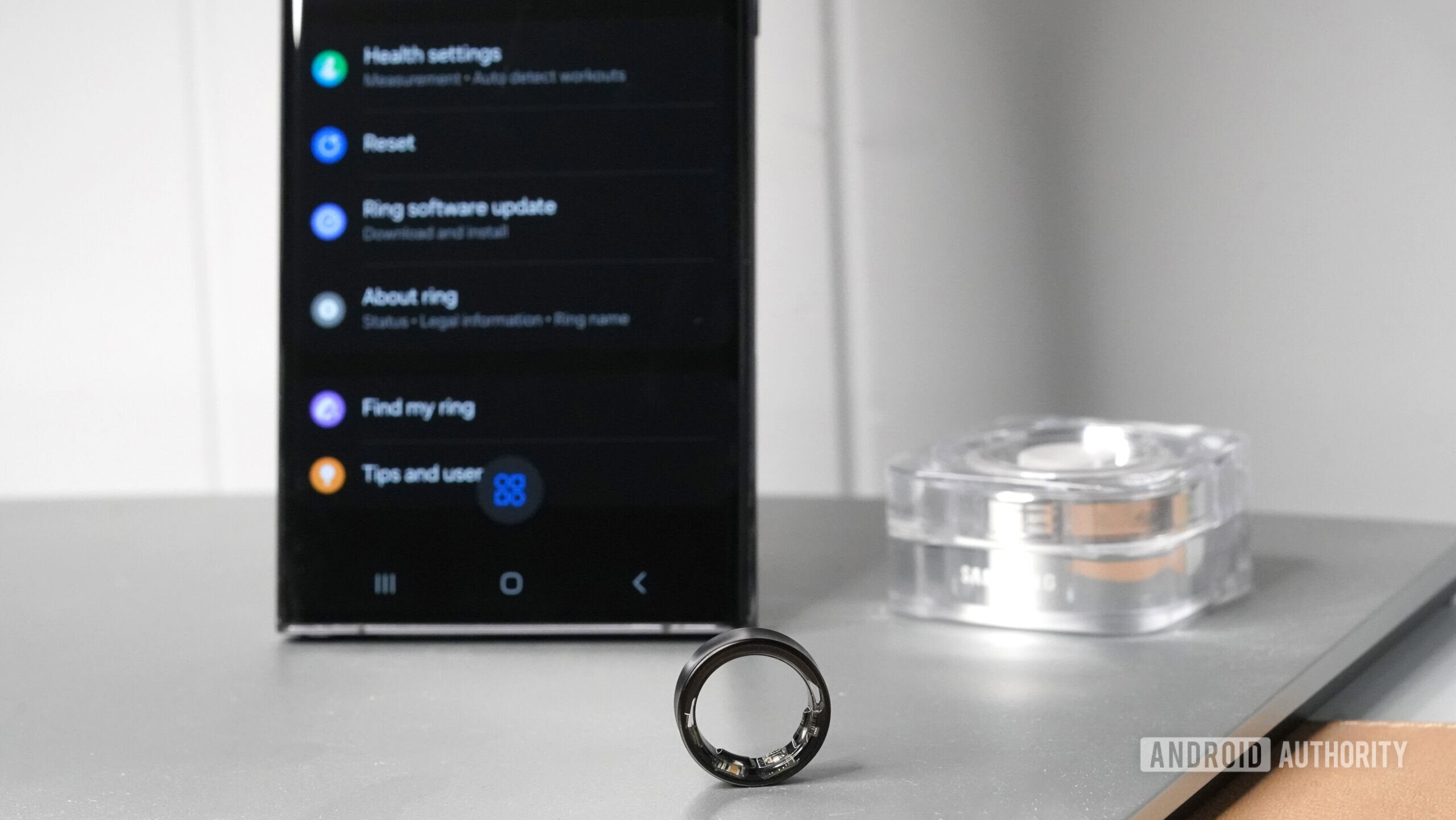
The Samsung Galaxy Ring is the company’s first finger-based wearable to hit shelves, and the tiny device packs a ton of features for users to explore. In addition to passive all-day health and fitness tracking, the ring is a comfortable bedtime companion for tracking your sleep as well. Unfortunately, like any new release, the Galaxy Ring is likely to face some hiccups. Here are some common Samsung Galaxy Ring problems and how to fix them.
Problem #1: Galaxy Ring not connecting
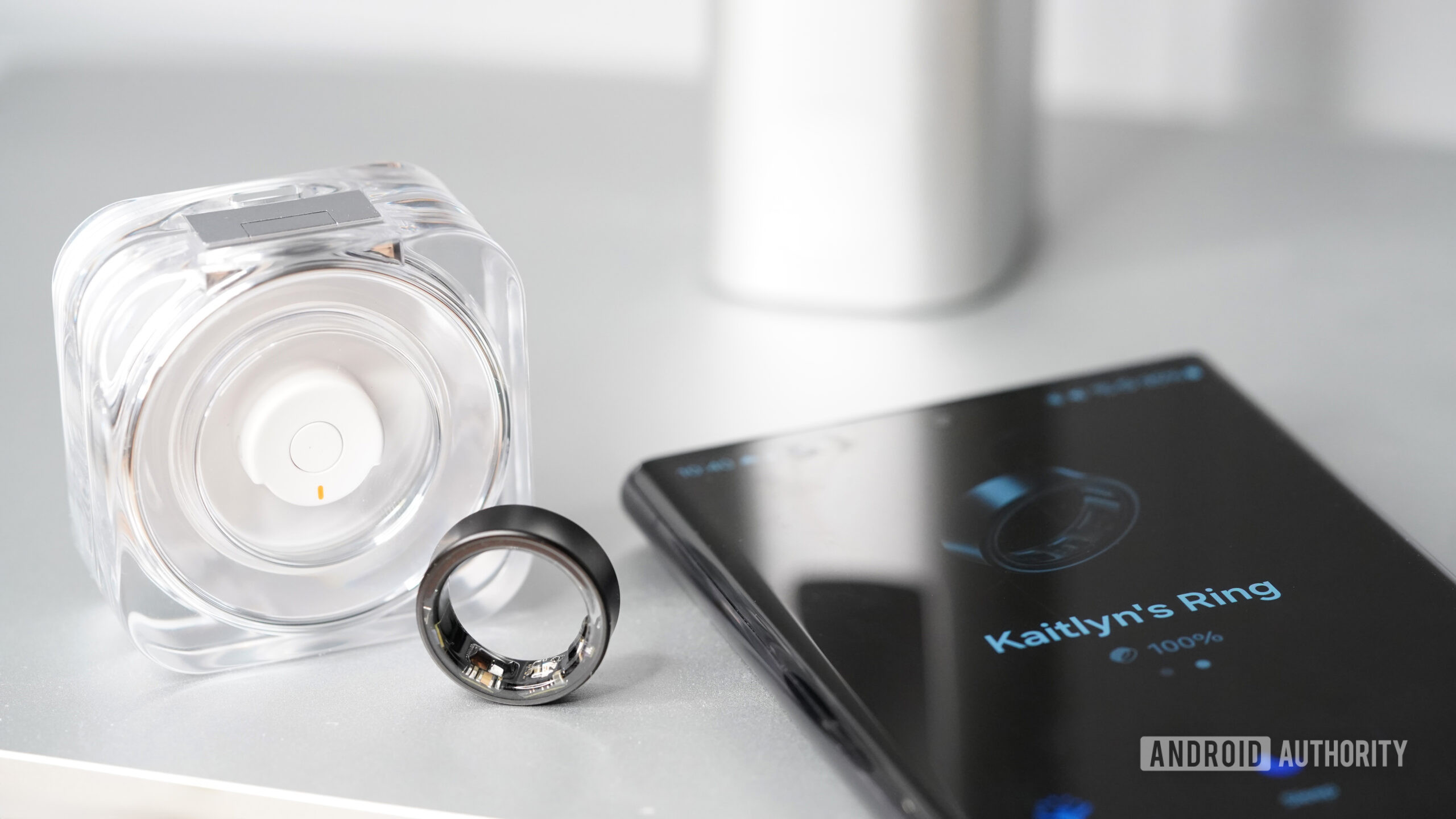
Without its own screen for checking stats, a solid connection to the Galaxy Wearable app is key to Galaxy Ring usage. Unfortunately, some users may face issues connecting to their smartphones or maintaining a connection that has been established. This is typically related to Bluetooth connectivity issues or problems with the app itself.
Potential solutions:
- To establish a Bluetooth connection between the smart ring and companion app, place the device on its charger and press and hold the charger’s multipurpose button for three seconds. This should facilitate a Bluetooth connection. Ensure your phone is close at hand without any obstacles between the devices. The Bluetooth range for the ring and phone is just under 100 feet.
- If the ring does not connect, allow it to charge for ten minutes and repeat the process. You can also try rebooting it by pressing and holding the multipurpose button for seven seconds. Then repeat the pairing processs.
- Check that your Galaxy Wearable app is running the latest software. You can also review the Ring’s software to see if an update is necessary. If needed, restart your phone and repeat the initial pairing process using the charger’s multipurpose button.
Problem #2: Galaxy Ring not charging
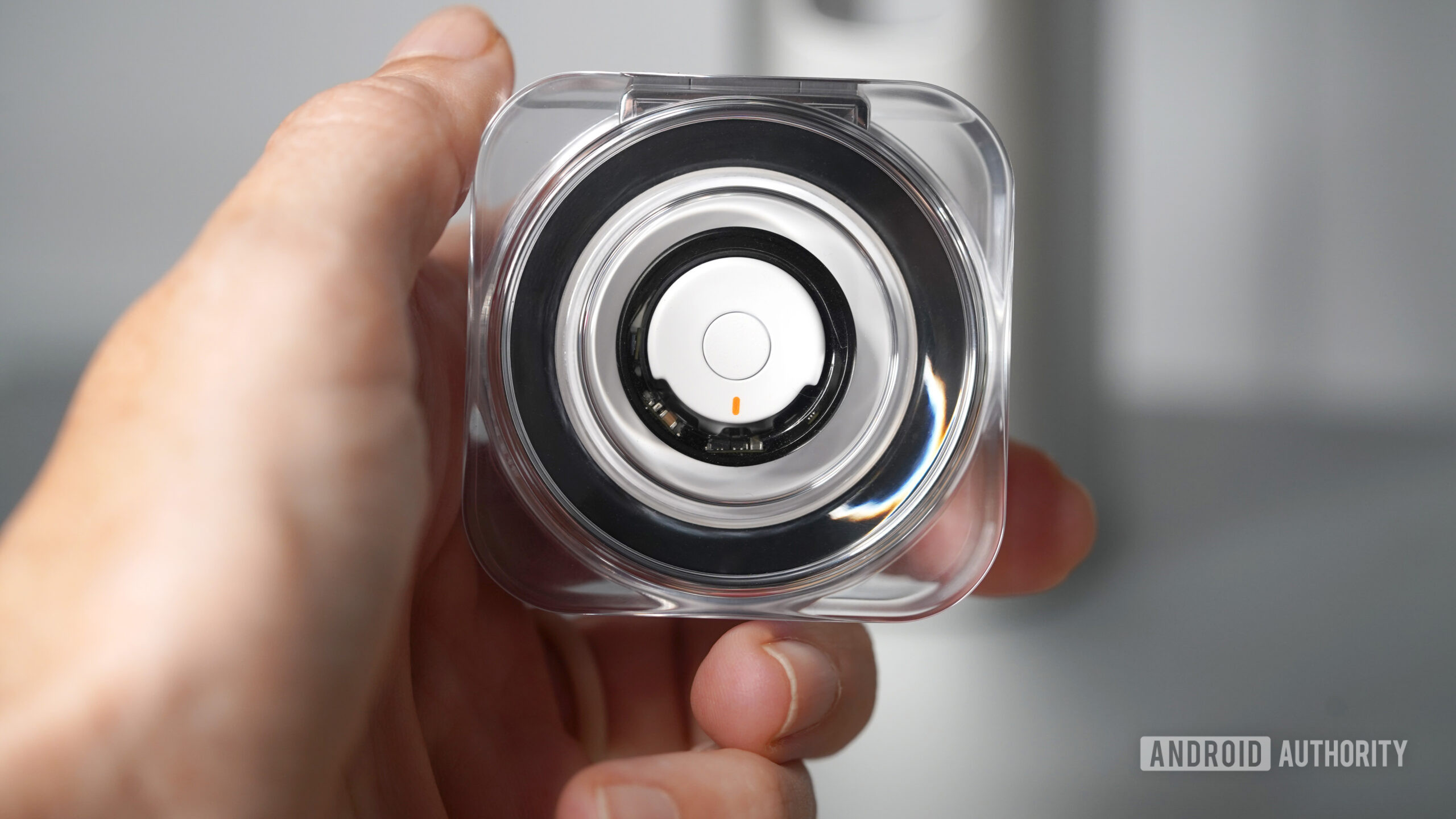
Charging problems are among the most common issues with any wearable, but fortunately, the solution is often very simple. With the Galaxy Ring, you may encounter issues charging the device itself or the portable charging case’s built-in battery. This can be due to alignment issues, power supply issues, or a charger that is out of juice.
Potential solutions:
- Though your Galaxy Ring charging case packs a built-in battery, its power may be depleted. Connect the case to an outlet via USB-C cable, then place the ring inside and close the lid. Ensure your outlet is powered. You can also use a wireless charger to charge the case with the ring inside, though Samsung recommends its own branded options for the best results. Likewise, the charging case is also compatible with Wireless PowerShare technology, so you can also place it on the back of a compatible Galaxy phone or tablet to charge.
- Ensure that your ring is properly aligned on the charger by matching the orange dash on the charger’s post with the embossed dash on the smart ring. This allows the sensors to fit accurately around the charging post and achieve a proper connection.
- Clear both the ring and the charger of dust and debris that may be inhibiting solid contact. Samsung recommends using a dry cloth to wipe down both parts.
- During our review period, we found the Galaxy Ring can last between four and seven days, depending on your usage. This means you should only have to power up an average of once a week. If your device is dying faster, contact Samsung Support, as you may be facing a hardware issue.
- Note that if your device is completely dead, you may need to charge it for at least ten minutes before it can be used.
Problem #3: Galaxy Ring not tracking sleep
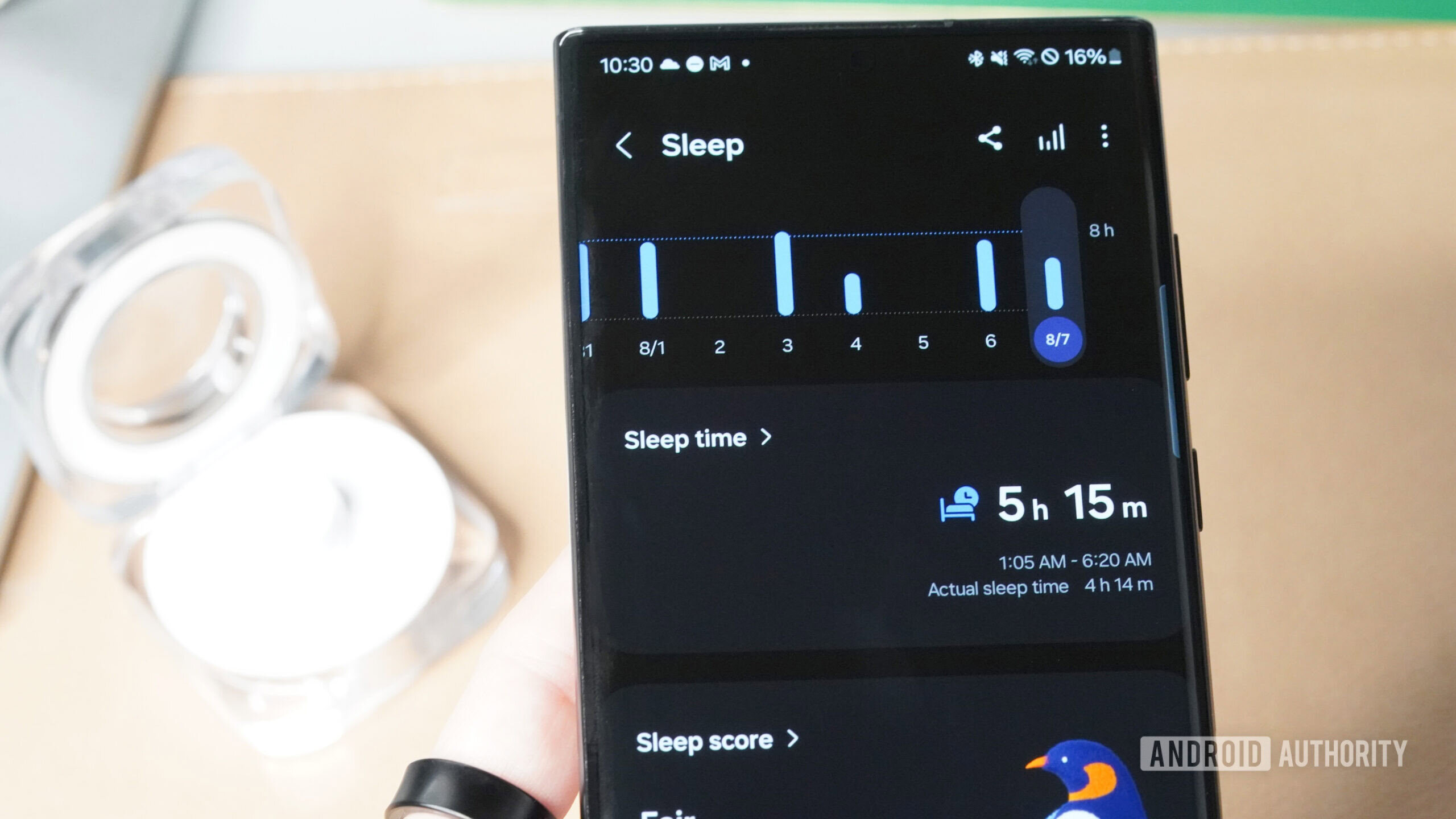
Arguably, the biggest strength of a smart ring is its comfortable form factor. Finger-based wearables are small and lightweight, making them great bedtime companions for tracking stats without a cumbersome fit or distracting display. The Galaxy Ring tracks users’ sleep patterns by measuring their heart rate, blood oxygen, and skin temperature overnight. However, some users may have difficulty initiating sleep tracking or locating their stats once tracked.
Potential solutions:
- Sleep tracking should begin automatically once you set up your smart ring. Before bed, make sure your ring is connected to the Galaxy Wearable app on your paired smartphone and that it has an adequate amount of battery for the night. Then, wear the device to bed with the sensors correctly oriented on the palm side of your hand.
- In the morning, open the Galaxy Wearable app and tap Sleep. You should be able to view your sleep data, including a sleep score and relevant sleep factors, sleep duration, sleep stages, and your sleep animal.
- If your ring is charged in the morning but failed to track your sleep or recorded inaccurate sleep metrics, check that the fit of the device is appropriate on your finger. It should be snug but not too tight, and the embossed line should be easy to keep on the palm side of your hand. If the fit seems good, try restarting the Galaxy Wearable app or unpairing and repairing the device.
- To access more advanced measurements, including blood oxygen, snore detection, and skin temperature during sleep, open the Galaxy Wearable app, tap Sleep, and tap the three vertical dots in the upper right-hand corner, then tap Advanced measurement. Toggle on the features you want to enable.
- As a last resort, you can also manually add sleep records in the Galaxy Wearable app by tapping Sleep and scrolling all the way down to Add sleep record. This will only include total sleep duration, but it can be helpful for understanding long-term trends should you forget to wear your device to bed.
Problem #4: Galaxy Ring not reading or recording heart rate
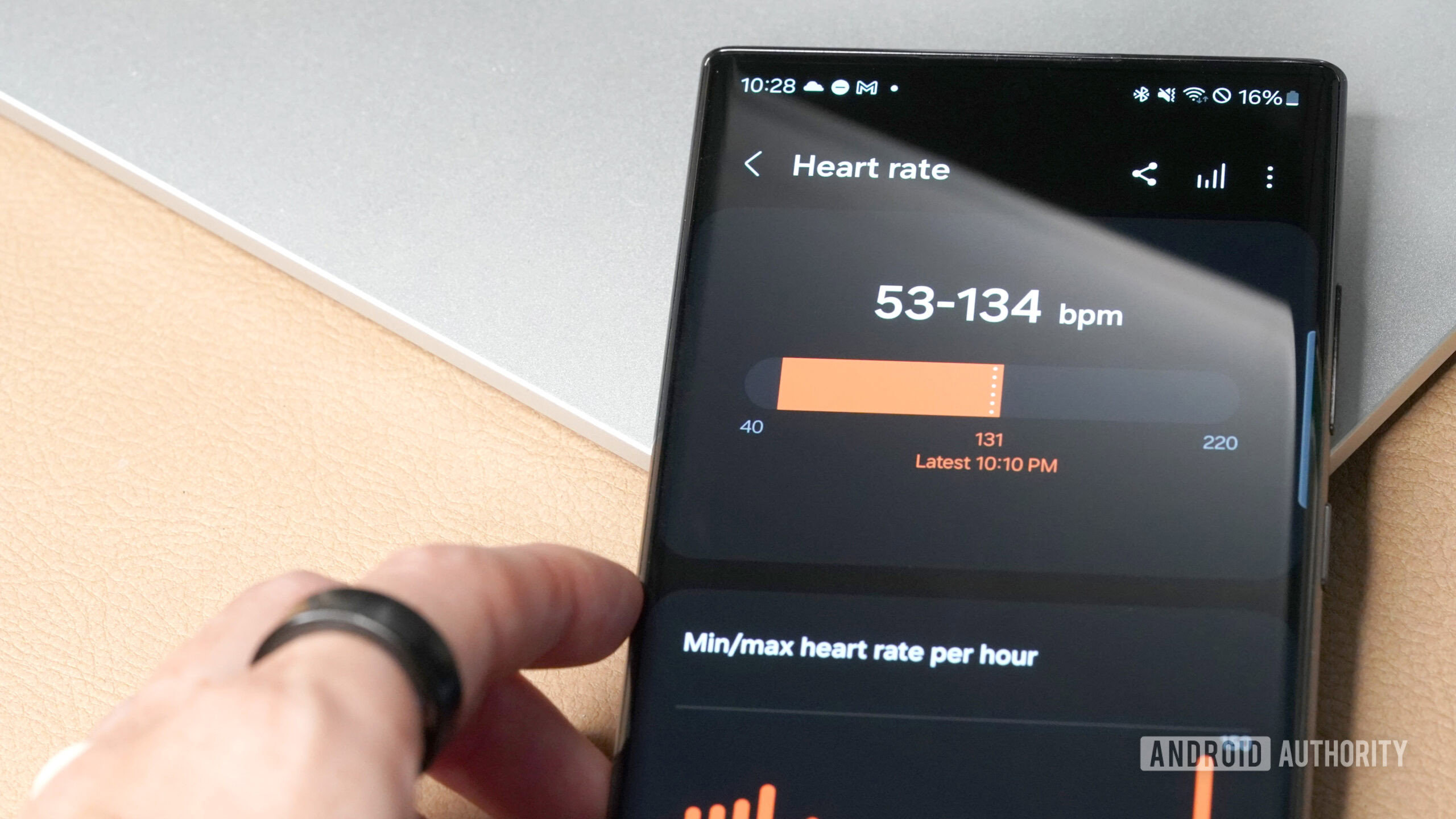
The Galaxy Ring automatically records users’ heart rates with a built-in heart rate sensor. This is one of the primary functions of the device, and the tracked data facilitates many of the tools it offers. Yet, some users fail to acquire heart rate readings or find that heart rate data is missing at different points throughout the day.
Potential solutions:
- A poor fit is the biggest obstacle to accurate heart rate data. Ensure you use the Galaxy Ring sizing kit to purchase the appropriate size. If your ring is too tight or loose, try swapping it to a different finger on your hand. Once on, the sensors should be situated against the inside of your finger with the embossed indicator line on the palm side of your hand.
- To view your heart rate data, open the Galaxy Wearable app on your paired smartphone and tap Heart rate. You can also take on demand measurements from here by tapping Measure.
- If you don’t see data or your data is inconsistent, make sure your ring has battery life and is paired to the app. If needed, restart the Galaxy Wearable app, unpair the device, and repair it.
Problem #5: Galaxy Ring not Auto-detecting workouts
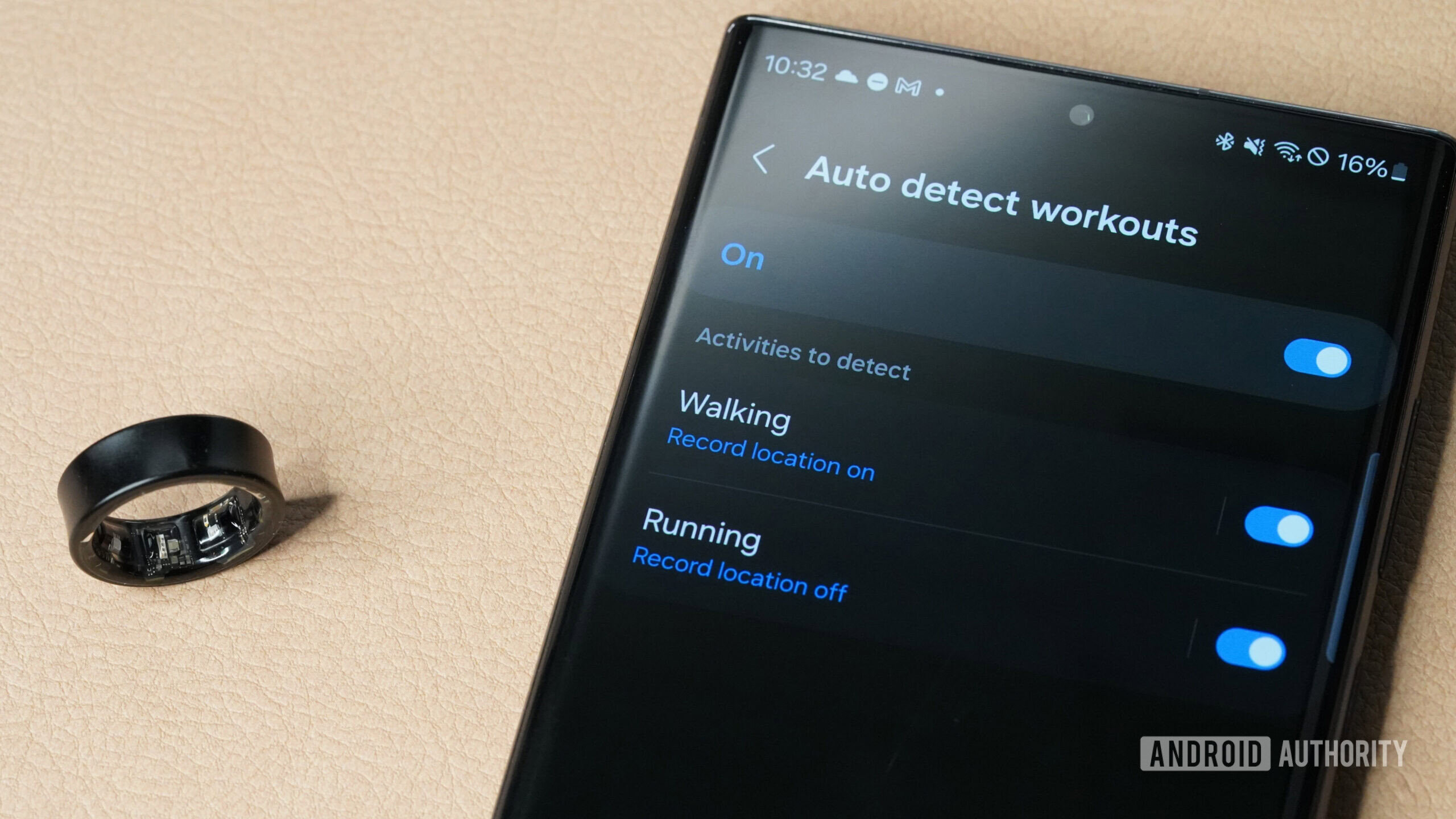
Though the Galaxy Ring lacks a built-in workout app or any way to manually start a workout recording on the device itself, the smart ring can automatically detect some activity types and record your relevant data. As of now, the Galaxy Ring supports automatic detection for walking and running and will track your workout duration as well as calories burned. With that said, some users may find their workouts are not being tracked.
Potential solutions:
- Open the Galaxy Wearable app on your smartphone, then tap Health settings. Tap Activities to detect. Tap the toggle to enable automatic workout detection, then toggle on the workout type(s) you are interested in recording.
- Open the Samsung Health app to review your recorded workouts. From the Home tab, tap Workouts this week.
- If you have automatic detection enabled and have been wearing the device for roughly a week or more but still haven’t received any workout records, try restarting the relevant apps.
- Again, like sleep and heart rate data, workout detection also relies on an adequate fit. Be sure your ring fits appropriately and that the device’s sensors are situated on the palm side of your hand.
Have you come across any Samsung Galaxy Ring problems? Let us know in the comments below, and we’ll do our best to help!